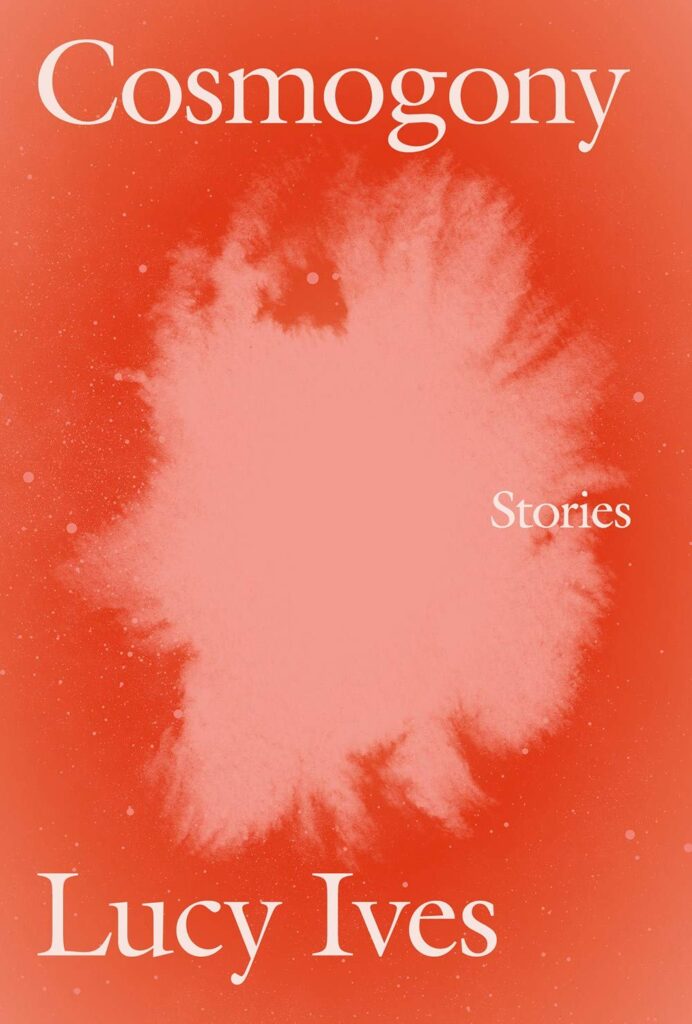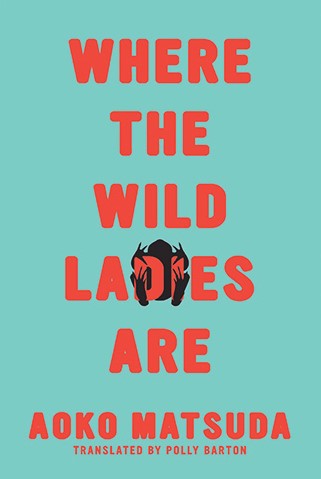Lucy Ives, Cosmogony
by Ashley Cullina
“Narrative could be merely decoration,” says the narrator of the last story in Lucy Ives’ Cosmogony. “This is the way things work — not through vision but through blindness,” says another, a few dozen pages earlier. Coupled together, these provisions act as a general manifesto for Ives’ approach to fiction: a reckoning between life as it is lived (blindly, in Ives’ mind) and life as it is stitched together in conventional fiction, where readers are soothed by the satisfying vision of how plot points cohere. With her earlier poetry and novels, Ives established herself as a bit of a formal and generic experimentalist, as a writer wholly and humorously unconvinced by the structures of contemporary life and writing. Cosmogony is no different. In each of Ives’ thin, mirthful stories, the structures and scenarios of everyday become a playground for more acute absurdities.
A sparse realism reinforces the collection — women go on runs, take phone calls, visit their families — but these mundane events are derailed by the introspective and fantastical musings of each narrator, such that real and unreal become tangled and inseparable. In one moment we’re having drinks with an ex, in the next we’re watching a pack of plucky Care Bears assassinate God. So vivid are these interior landscapes that many begin to take on the dimensions of magical realism. The titular story (and the most successful of these adventures in surrealism) features a friend’s marriage to a demon with “an occult understanding of the stock market”. Such moments have prompted labellings of Ives as an ‘odd’ writer, or a writer of ‘odd fictions.’ I can find no straightforward way to disagree, except to offer that Ives is simply registering, in a gleeful, absurdist means, the oddities already latent in daily life. The strangeness of textspeak, art criticism, and human connection become visible when filtered through Ives’ lens.
Ives, too, knows about sentences and their flavours. She recalls words not only with attention to their sound and their space, but to their tropic connotations. When one reads, for example, “I would go sometimes to the twenty-four-donut shop on the hill above our apartment. It wasn’t a fancy place, but the Boston Creams were good and it had seating,” we believe we know what we’re getting into. This is a familiar realist terrain, where characters complete errands and engage in minor interactions. Then, “it was a place where I could go to mourn.” In moments like these, when the mechanisms that maintain structure are exposed, Ives prompts us to recontextualize what we hold as familiar. She gestures towards a literature that promotes, rather than resolves, ambiguity. Armed with a menagerie of inventive devices (and a cast of bewildered narrators) Ives has written a collection that is satisfyingly estranged from ordinary events.
Aoko Matsuda, Where the Wild Ladies Are
by Campbell Campbell
How can returning to the past heal you, and how would your ancestors have addressed the alienation and financial stress that seem to plague our historical moment? Aoko Matsuda explores such questions in her dazzling short story collection Where the Wild Ladies Are. She revives an oral tradition of Japanese folktales by transporting female spirits and yōkai (traditional Japanese monsters) to contemporary contexts. From an aunt who admonishes beauty standards for women, two saleswomen who share their lifestories with clients, to a lover who visits each night for bathtime, these spirits are as alive and demanding to be heard as the story’s living characters, and they are all linked by their employment at the mysterious company run by Mr. Tei.
Matsuda pulls off such a brilliant ventriloquism act that it is easy to miss that these women are metaphors for history. They are entering your house and refusing to be ignored, and they are asking you to defamiliarize your relationship to your body, your work, and your living and dead relatives—everything needs to be re-examined for its humor and its absurdities with a feminist and anti-capitalist lens. This relies on a conception of time that is not linear or exhaustive of past events, but recursive with constant remembrance of what wisdom the past holds. It was such a delight to read a text that centers feminine energy and ponders what ancestors would have to say about the existential question of marriage and the mundane routine of self-care.
I began the collection wondering what would be lost in these female portraits when they were translated from an oral to a print tradition and from the Japanese to the English language, but I was struck by how this collection only gained from its intentional collaging of these traditions, languages, and the youthful cultures of the East and West. The book’s translator Polly Barton offers so much promise given the success of this collection and her other translation There’s No Such Thing As An Easy Job. She breathes such life into the prose with its energetic sentences and hilarious dialogues that it is hard not to imagine the scenes being played out before your eyes.
Where the Wild Ladies Are delivers wit, love, and a return to history in the form of seventeen short stories.
Cosmogony by Lucy Ives and Where the Wild Ladies Are by Aoko Matsuda available from Soft Skull Press.

